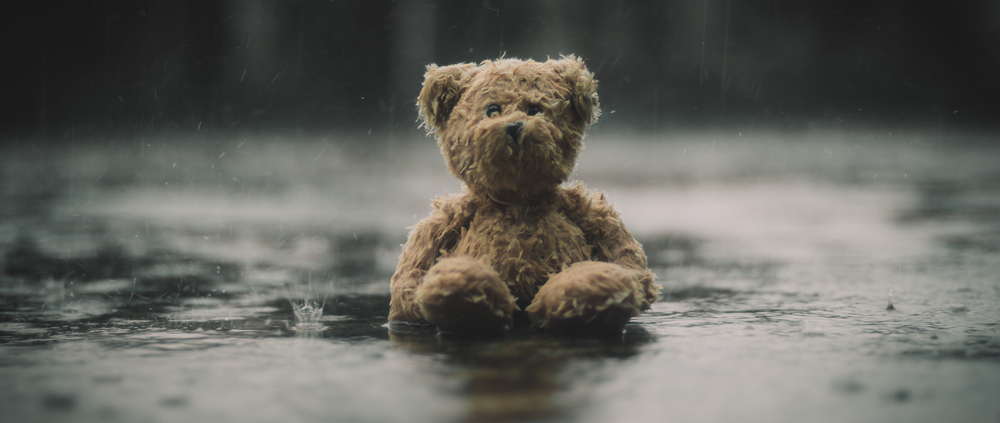Are Sentimental Teddy Bears Permissible for Grown-Ups?
Answered by Shaykh Irshaad Sedick
Question
I own a stuffed toy (a dog or bear, it’s hard to tell) that was given to me as a child by my grandmother, who lives abroad.
Is keeping it and sleeping with it haram now that I’m an adult? It’s very precious to me since it makes me think of my grandmother.
Answer
In the Name of Allah, the Most Merciful and Compassionate. May Allah guide us to that which pleases Him, forgive us for our shortcomings, and alleviate our difficulties, Amin.
We know, with certainty, that the Prophet (Allah bless him and give him peace) permitted ‘Aisha to play with dolls, and according to an analysis of historical reports, she had probably reached the age of puberty by then, and Allah knows best.
To avoid the difference of opinion (as it is generally unlawful for grown-ups), I’d like to advise you to either hold onto it for your children one day or change its form into an inanimate object.
Our Mother, Aisha’s Dolls
It was reported that ‘Aisha, (may Allah be pleased with her), narrated:
“When the Prophet (Allah bless him and give him peace) arrived (at her house) after the Battle of Tabuk or Khaybar (the doubt is from the narrator), the wind raised one end of a curtain that was covering her store-room, revealing her dolls. Among them, he noticed a horse with wings made of rags and asked, “What is this that I see among them?” She replied, “A horse.” He asked, “What is this that it has on?” She replied, “Two wings.” He asked, “A horse with two wings?” She replied, “Have you not heard that Sulayman (Solomon) had horses with wings?” She then said, “Thereupon, he laughed so heartily that I could see his molars.” [Abu Dawud]
According to Shaykh Yusuf Al-Qaradawi: It appears that ‘Aisha had already reached the age of puberty after the battle of Khaybar, and Allah knows best. The Prophet (may Allah bless him and give him peace) married her when she was six years old, and he consummated the marriage with her when she was nine years old. [Bukhari, Muslim, and others]
This was in the first year of the Hijra, as stated by the biographers. That was in the month of Shawwal, eight months after the Hijra [Hakim Al-Mustadrak]
Ibn Hajar (may Allah have mercy on him) said: “If it is proven that he (peace and blessing upon him) consummated the marriage with her in Shawwal in the first year of Hijra, this strengthens the view that he consummated the marriage seven months after the Hijra.
If we say that the Prophet (Allah bless him and give him peace) consummated the marriage with her seven or eight months in the first year of Hijrah, then after the Battle of Khaybar, she would have reached fourteen or fifteen years old. Many girls reach the age of accountability for their deeds before this age.
‘Aisha was about fourteen years old when the Battle of Khaybar took place, but in the Battle of Tabuk, she had reached the age of puberty without any doubt.” [Ibn Hajar, Fath Al-Bari]
Graven Images – Could it be Brought to Life?
The Sunna contains several severe warnings against the depiction of animate life:
Abu Hurayra (may Allah be pleased with him) reported Allah’s Messenger (upon him be peace and blessings) as saying, “Angels do not enter a house (or any other place) where there are statues or pictures.” [Muslim]
Scholars have deduced manifold wisdom of the impermissibility of depicting animate life. Many scholars appear to regard the depiction of images with incomplete features (having no nose, eyes, and neck, etc.) as lawful. Therefore, their makers are not included in the warning because these pictures are not “competing” with the creation of Allah.
The Messenger of Allah (peace and blessings of Allah be upon him) said: “Those who make images will be punished on the Day of Resurrection, and it will be said to them: ‘Bring to life that which you have created.’” [Agreed Upon]
Non-detailed images (and figurines) are permitted even though they depict living beings. [Ibn Abidin, Radd al-Muhtar]
Therefore, if you cannot store it for your children or donate it to a child who may find comfort therein, you may convert it into a form that no longer qualifies as an accurate depiction of animate life, and Allah knows best.
I pray this is of benefit and that Allah guides us all.
[Shaykh] Irshaad Sedick
Checked and Approved by Shaykh Faraz Rabbani
Shaykh Irshaad Sedick was raised in South Africa in a traditional Muslim family. He graduated from Dar al-Ulum al-Arabiyyah al-Islamiyyah in Strand, Western Cape, under the guidance of the late world-renowned scholar, Shaykh Taha Karaan.
Shaykh Irshaad received Ijaza from many luminaries of the Islamic world, including Shaykh Taha Karaan, Mawlana Yusuf Karaan, and Mawlana Abdul Hafeez Makki, among others.
He is the author of the text “The Musnad of Ahmad ibn Hanbal: A Hujjah or not?” He has served as the Director of the Discover Islam Centre and Al Jeem Foundation. For the last five years till present, he has served as the Khatib of Masjid Ar-Rashideen, Mowbray, Cape Town.
Shaykh Irshaad has thirteen years of teaching experience at some of the leading Islamic institutes in Cape Town). He is currently building an Islamic online learning and media platform called ‘Isnad Academy’ and pursuing his Master’s degree in the study of Islam at the University of Johannesburg. He has a keen interest in healthy living and fitness.
